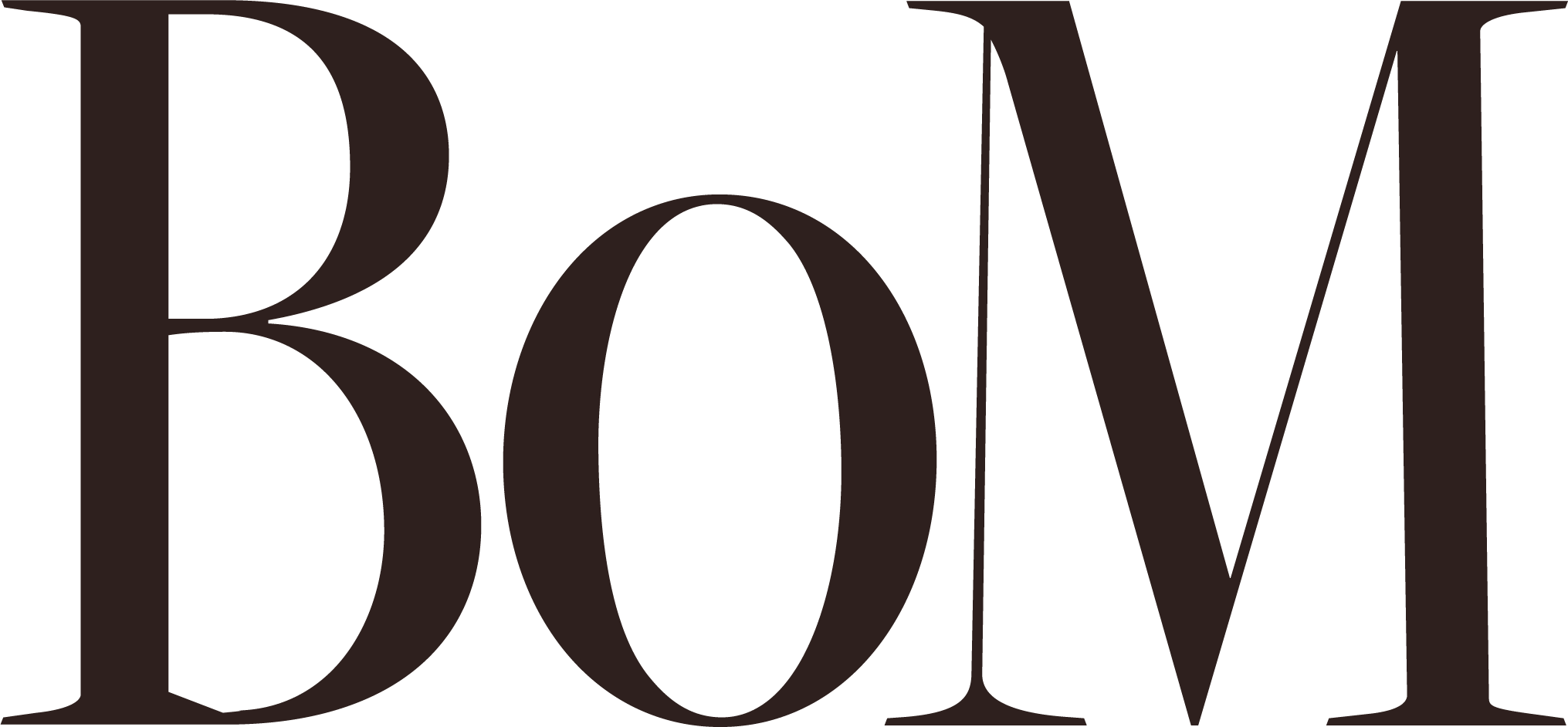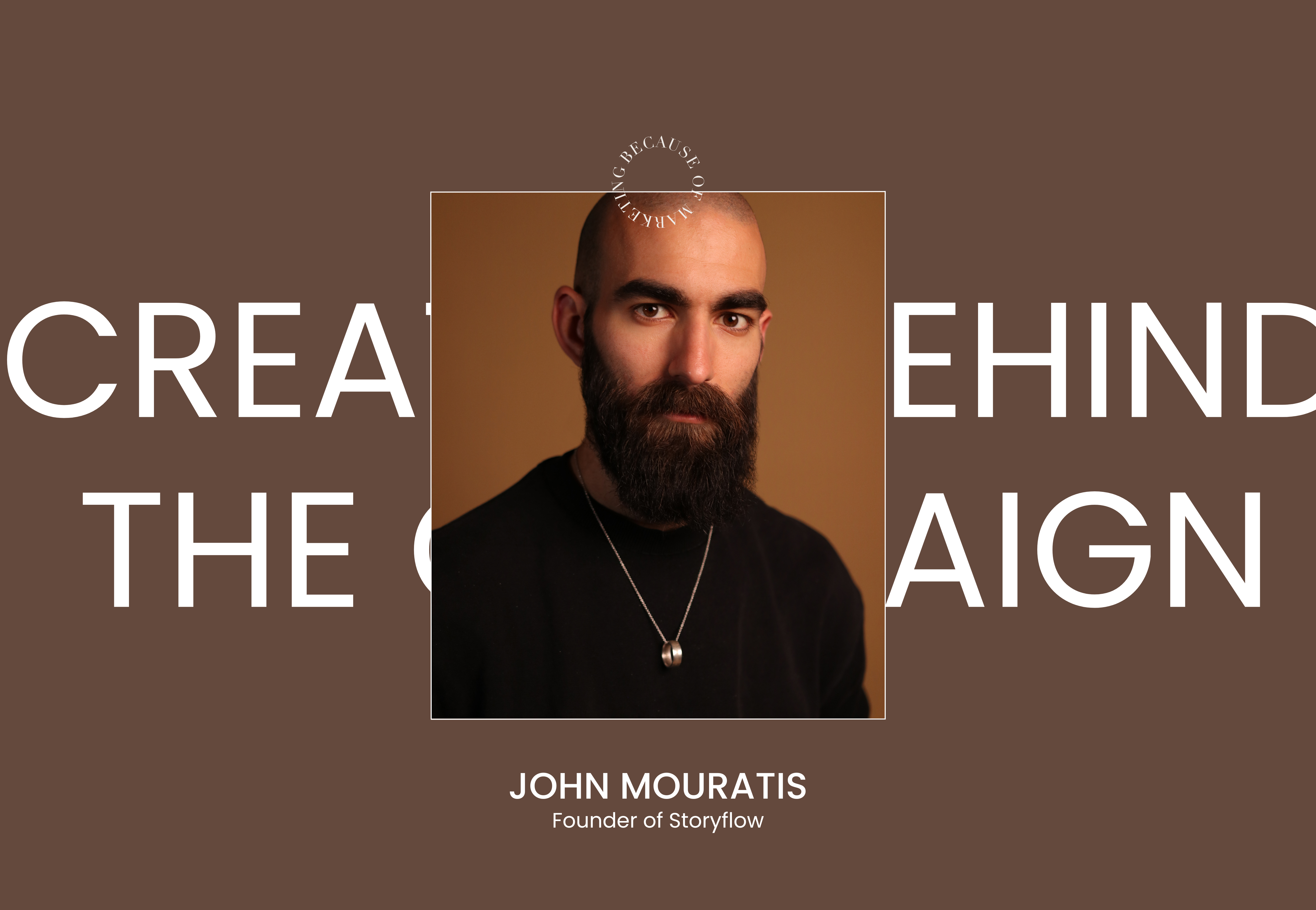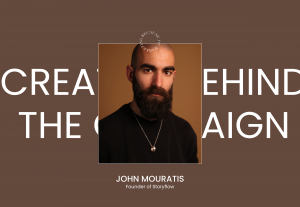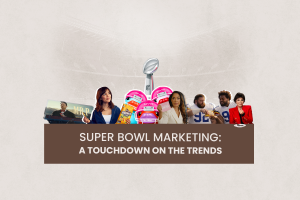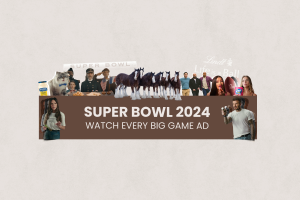In feature 019, we spoke with John Mouratis, Founder of Storyflow, a UK-based video marketing company that loves to create engaging campaigns for innovative businesses.
John shares with us his background from graduating with a Masters in Electrical and Computer Engineering to working with brands including Amazon Prime & HBO, Ralph Lauren, Reebok and TimeOut London, to name a few. John further explains the importance of storytelling in video, the metrics he tracks for a successful campaign and his challenges working in the industry whilst running a business.
1. Can you please tell us about your background and how you got into the field of advertising and video marketing? When did your marketing career begin, what is your current role(s) and what role(s) have you previously had in marketing?
Like many people in advertising, I started by doing something completely different in my life.
My Masters is in Electrical and Computer Engineering. I had good grades in school and had no idea what I wanted to do in the future.
Naturally, I made the easy decision and followed the same path that both my father and my older brother did. When I got into university, I quickly realised that I wouldn’t pursue engineering as a profession.
My interests shifted away.
Around this time, Casey Neistat birthed the golden era of daily vlogging. I loved them, they were my main entertainment.
Not messing around, I started creating my weekly vlogs.
Filming at day, and editing at night. My soul was on fire again after a long time. I always had a big love for storytelling, mostly painting pictures with words.
Now for the 1st time, I was filming them.
Friends loved it, people supported it, and eventually, it got me a couple of gigs as a videographer.
First from people I knew, then from small business owners who found me online.
Despite being very painful, I quickly realized that in Greece you can’t make a career in video production the way I was aspiring to.
A small industry, with toxic perceptions.
Most consider video as a hobby and we all know that people are not willing to pay a lot for hobbies in business.
Especially in a low-level economy such as the Greek one.
Again, timing was the key thing.
I acted quickly, and in 2020 during the middle of the 1st lockdown, I moved to London to pursue my goals.
For 7 months I spent my savings, and despite a couple of gigs, I didn’t manage to find any jobs.
April 2021 was my cutoff date.
If I couldn’t find any steady income until then I’d have to momentarily quit my dream and move back to Greece.
But in March 2021, it happened.
I got my first job as a PA in a Netflix Feature Film.
Even better than I ever imagined, working towards a bigger dream of mine (that golden award all filmmakers crave).
Fast forward a few jobs later with big steaming companies like Amazon Prime & HBO, and the film industry sucked all the love I had for it.
I was working 80+ hours a week and was making good money but with no time in my life to spend them.
Despite getting a couple of quick promotions in the meantime, I also saw how corporate the film industry feels at times.
The super fast pace doesn’t allow for any testing, and ideas I was giving to my managers would be ignored instantly.
I had enough of it.
Friends from the crew I was working with, with 20 more years of experience than me, told me to go and do some short form, make some good money, relax, and then come back refreshed.
Short form means branded content, TVCs (TV Commercials), music promos, fashion, etc.
I did all of it.
For the next 2 years, I did 50-100 jobs and tried everything.
From global campaigns to YouTube content to music promos for global artists, to fashion shows, and even gaming videos.
Nothing energized me more than brand work and advertising.
It always felt like a problem to solve. That’s the best thing for me.
Gladly, talent is getting recognized much faster in short form.
From PA to Coordinator then to Production Manager and eventually to Producer.
Every experience taught me how to approach things creatively, but mostly how to communicate with people.
There is abundant creative talent in the UK. My role was always to know who is the best person for the job, where to find them, and how to motivate them to give their 110%.
The rest takes care of itself.
Find great people, give them the resources they need, and let them do the thing you hired them for.
But even that wasn’t enough.
I’m a long-term person, and freelancing is not quite the best fit for it.
Even my favorite projects would still end at some point.
I wanted to create something that I could see daily getting better and better.
Also, not being from an advertising background meant I was looking at the industry with a fresh eye.
No one taught me the good and the bad. I saw them with my very own eyes.
And truth is, the advertising industry in the video world is a bit of a mess.
Those 2 reasons are what prompted me to register my video agency Storyflow, and eventually in November 2022 jump full-time on it.
In the last year and a half, we’ve worked with 40+ companies and brands such as Reebok, Poke House & Time Out London.
It’s a small team built by senior people, with a mindset driven by innovation, simplicity, and results.
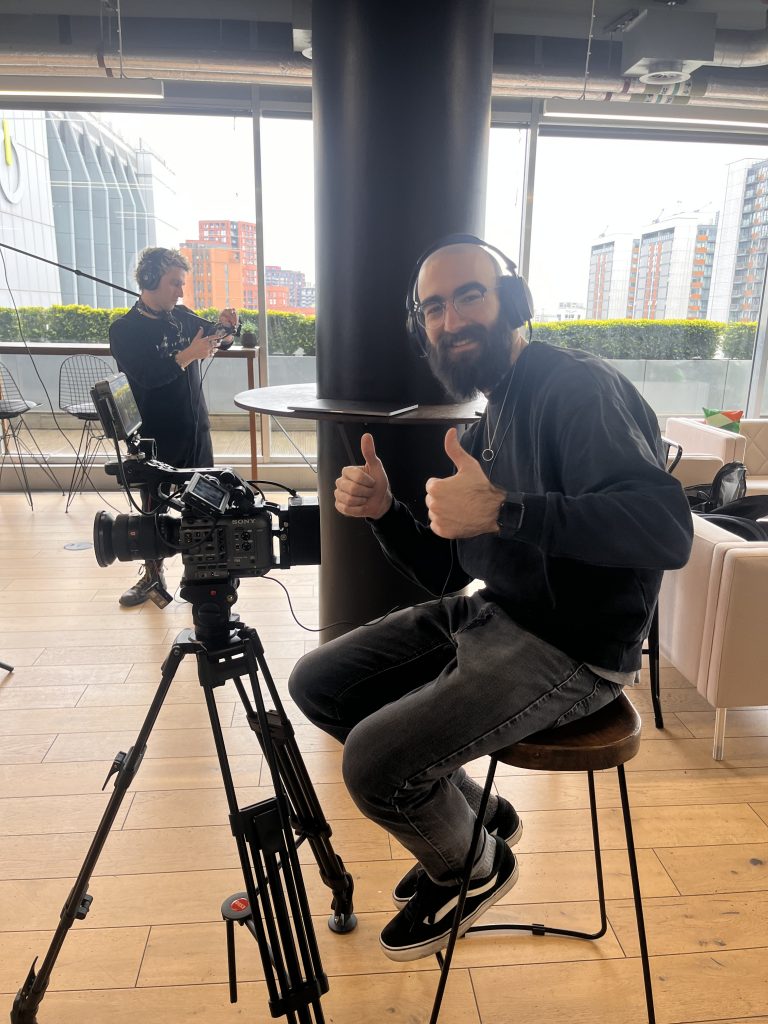
2. Are you able to describe a typical day in your life as Founder of Storyflow?
As a small team at the moment, I deal with many things and I work many hours throughout the day.
Most of our new clients come through my personal brand on LinkedIn so I invest the first part of my day there growing it through the content I create and the connections I build with other people.
Then there is the catchup on current projects. We always have multiple projects being on different stages. Some are in the final stage of signing contracts and have to review the legal part, some are in the pre-production stage, and some on the post-production stage or editing.
Currently, we’re filming about once or twice a week. During those days I’m on set as most times I produce our shoots apart from when I need to deal with other stuff around the agency, and Nikky, my Production Manager, covers for me.
After the current projects, we deal with the pipeline. These are projects we pitch and create proposals for as they’ve come to us either through the brand directly or through an advertising agency.
They take a big chunk of our time as it’s an essential part of our business.
We put a lot of effort into breaking down the challenges the brand faces, the desired outcomes they’ve, and how to figure out a strategic creative solution to get there. That’s usually between me, the video director for the project, and a creative strategist too.
Now it’s usually around lunch break time. Taking a proper break and maybe a walk too is really important for me. Clearing up my brain and coming back refreshed for the 2nd part of the day.
The second part usually will include a couple of client meetings. I don’t like having meetings before noon, as it’s my deep-focus session.
Potentially might also include a networking coffee with new clients, other agency owners for potential partnerships, or maybe creative freelancers who we can bring on future projects.
It’s important to always look for the best talent out there to stand out.
After the meetings finish around 4-5 pm I usually take another walk, before I dive into a vision session where I try to zoom out and focus on what we need to prioritize to hit our goals. I like doing short sessions daily and then a long one with the whole team bi-weekly.
For the last part of the day, I leave education.
Reading news on the agency world, exploring new video tools (nowadays mostly AI), and researching new campaigns that come out to find creative ideas & references.
The day usually ends around 8 pm when I take 2.5 hours before sleep to simply detox, read some books, spend some time with friends, and let my mind breathe.
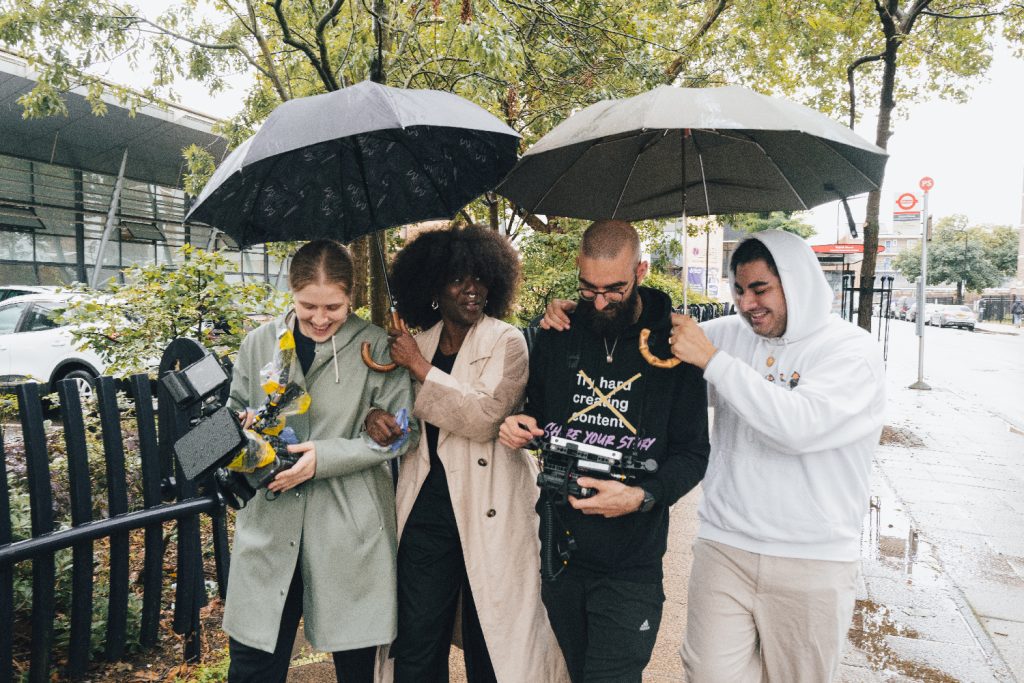
3. Storytelling is important in campaigns. How do you approach crafting a compelling narrative that resonates with the audience while staying true to a brand’s message and values?
As the king of sales, Jeffrey Gitomer said: “People love to buy and hate to be sold to.” It’s now more true than ever.
Our viewers today are 100 times more educated than 20 years ago. YouTube, Instagram, TikTok, Netflix. We all consume so much content. Plus we’ve access to many incredible creators showing us the behind-the-scenes approach of brands in advertising messaging, sales, and communication techniques. Even if you don’t, there is always going to be one knowledgeable and well-articulated person who will write a great comment, get 100s of likes, and put your brand in a rough spot.
To solve that problem, there is one clear solution: Don’t try to sell.
Instead, try to tell the right story to the right audience. Let’s break it down.
The right audience:
Brands, like most people, face the tricky challenge of FOMO. They want to be part of a 7 billion market and try to get 1% of it, instead of focusing on significantly smaller markets that they can dominate.
Unfortunately getting that 1% of an enormous market will 99.99% not happen.
That means you need to focus.
Figure out who you can serve in the best way, who needs you in their lives right now, and who is ready to buy.
That’s your audience, the people who you’ll create a show for.
Make that show your best-ever creation, by telling the right story.
The right story:
The biggest mistake I see is assumptions.
Creative teams, either in-house or agencies, are confident that they know their audience.
At the same time, two things happen:
- Not having people in their team who belong to that audience.
- Never spoke with anyone in that audience before deeply about their problems.
Despite that, they have strong feelings and are super confident about what the audience desires, what problems they face daily, and what bothers them.
Think less of yourself. Build your story based on data, based on a catalog of past assets from your own or a competitor’s brand, based on what has worked already.
The first story that comes to mind is rarely the best one.
Creatives’ biggest challenge is ego, their attachment to their ideas and work.
If someone rejects your idea with valid arguments, never get defensive about it.
An idea with zero implementation has zero value. So feel free to move on to the next one. Because if you push a creative idea for no real reason apart from your ego, you end up poisoning the collaborative spirit which is extremely important to land on the right story.
Step two is to not try to reinvent the wheel.
- You don’t need to create the next big thing
- Creative doesn’t mean ‘never seen before’
The best creations draw heavy inspiration from other grand artworks.
Disruptive and innovative are two overused buzzwords nowadays, and you can reach a top level in your marketing, advertising, or creative field without ever considering those things. Remember: We create for consumers, not for advertisers.
A 9-step guide to build a great story:
- Get inspiration: Vimeo Staff Picks, AdAge, Ads of Brands YouTube Channel, Eyecandy
- Angle: Find a previous story and add your specific angle that is relevant to the brand
- Researching: Find image references, locations, cast options, and set design options. Use AI a lot to help you with that.
- Gathering Assets: Organise your folders and gather assets to create a visual board in places like Miro or Notion
- Outline: Create a script for your idea based on storytelling frameworks and the complexities of the asset you want to create e.g. 30sec TVC or 15 sec online paid ad
- Body: Start with the core part of the story, where the value of it is. Make sure it’s relatable, fresh & consistent in regards to value.
- Conclusion: I always like figuring out the end before the start, especially for conversion. The final message is the push that will make your client $$.
- Hook: Attention is today’s currency. Make sure you say what your audience wants to hear in the first few seconds.
- Edit & Software: Put everything together using presentation software like Keynote or even Canva (no need for more complex stuff at that point)
Do all that based on brand documents too like guidelines, the brand book, and info from your discovery calls.
Also, understand people. Behind a brand’s decision is an individual or a small group of people.
Learn about their preferences, bad experiences they had in the past, and their vision and aspirations for the next steps of the brand.
Contribute towards that, and your story is highly likely to see the light of the day.
4. You worked and created Ralph Lauren’s Autumn campaign ‘Polo Originals’. With over 61K views on YouTube alone, are you able to walk us through the creative process from brief to execution?
One of my favorite jobs.
For people who are not aware it’s good to explain first how a campaign works for companies like Ralph Lauren.
Brands of the size of Ralph Lauren usually work closely with a creative or advertising agency for their campaigns despite having a top senior in-house team.
Then the agency hires a production company to bring their vision to life through a director or photographer who has won the pitch for that job among a close selection of 3-5 people.
The production company either does the job themselves if the locations are within the country they’re established in, or otherwise, they hire and manage a service local company to put the production together.
The agency puts together the brief along with the client, and then the production company adds its creative spin to the core idea.
The service company has no role in the creative part, simply handles the production process.
On this specific project, I was part of the production company, and since the job was in the UK we didn’t have a service company.
It was the 2nd campaign we did for Polo RL, as we did the one the year before too.
It’s very validating when big brands stick to the same team, and trust the process as many big companies always look for a shiny new creative team despite the results and performance of their previous campaign. Again, FOMO is everywhere.
The brief can start as soon as the previous campaign ends.
Especially with brands of that reach, you’ve more to lose if you don’t get things right than to earn if you do.
That’s why it’s rare to see brands being bold with their established image, after surpassing a certain size.
The brief is being built between the brand and its creative agency.
Since I wasn’t part of the agency and joined the process later I can’t specifically talk about that part.
Although, most likely they followed the standard procedure.
That is signing off the overall idea, and the budget available for it. They began gathering the pieces of the puzzle.
General mood, potential locations, set design options, casting preferences, styling.
Based on the outcome of those early discussions they were looking for the right creative talent to overview that process.
Sometimes, agencies have great experiences with specific production companies and they go to them first to source the talent they want to represent them for the campaign. By talent, I mean the head of creative which would be either a director or a photographer.
Production companies traditionally have a large roster of directors (if they’re motion-focused) or photographers (if they’re focused on Stills) to provide to agencies they work closely with.
After the agency picks the talent, people pitch for it.
Pitching is a big topic in the advertising industry right now, as it’s a non-paid process usually, and it can cost your attention from other opportunities if you don’t win the job.
Unfortunately, the split between the candidates is not equal as someone always has the inside information and between 3 people for example the split is more like 75-15-10, despite everyone putting in the same effort.
That’s also because contractually the agencies have to go through a selection process.
After the talent is decided, the production company comes into play to make the agency’s ideas a reality.
The production company hires a location manager, an art director, a cinematographer, a stylist, a casting director, potentially a choreographer, or a VFX Supervisor for the start.
These are the HODs.
Documents are being assembled and sent to the agency every other day with props, location options, casting options, outfit ideas, etc to give feedback and eventually sign off what’s closer to the winning idea.
We start hiring stuff for the shooting dates and that ranges from camera and lighting equipment to production and location equipment like chairs, radios, heaters, etc, catering for the day and snacks, to rehearsal studios if there are any choreo or tricky acting scenes, to location vehicles like Winnebagos for the client or talent, filming studios and many other things.
At the same time, we have a client who is traveling from the US, so we also have to sort out flights for them, pickups, hotels, carnet if they fly in any equipment, etc.
The beauty of production is in the pre-production stage. If you’re really good, the shooting days should feel like a day off for you.
Close to the shooting we bring a 1st Assistant Director on board whose main job is to schedule the days based on the scenes we’ve to shoot.
Shooting days are always magical. In good and bad ways. For example, on the Ralph Lauren shoot, we were filming in rural England near Chichester.
We were aiming for a slightly cloudy day, but as always the British weather was way more generous than that, and we got very heavy rain over a 3-day shoot. Immediately everything becomes 10 times more challenging. We’ve people on set, outfits that need to not get wet, electrical equipment to be protected, etc.
Setting up Gazebos, hiring more trucks to host people, having runners & PAs being absolute heroes, and getting super wet to make sure everyone ‘important’ like talent, agency, client or HODs stays nice and warm.
For the Ralph Lauren campaign, we did both stills and motion, as most fashion brands use to do nowadays to save budget and be more efficient. That means you plan two different departments that have to cooperate continuously.
Fortunately, the video production industry is full of nice, hard-working people.
Being on set especially on location can humble you very quickly.
The long hours, the heavy lifting job, the need to always think in advance and solve problems before they even happen.
Plus shooting in locations away from home many many times.
For that reason, I’m glad that on the Ralph Lauren shoot, everyone was on top of their game. Despite the challenges we got everything we needed and the client was ultimately very happy.
There is no such a feeling after listening to the ‘Ladies and gentlemen, that’s a wrap!’ after a big campaign.
But for the main people involved, the ‘it’s a wrap’ period lasts for a short time.
Soon we started the post-production process which has to do with delivering first drafts, doing the offline as we call it which is the sequence without color grade on it for video, or the selects for stills which are the photos that haven’t been retouched yet.
That’s for the client to give feedback and lock the creative assets before move on to be finalized by specialists again depending on if it’s videos or stills.
For videos is a VFX artist for any cleanup needs and then the colorist to color grade the sequence.
Then we move to the ‘online’ which is the process of exporting the full-quality video.
For stills on the other hand is moving to retouching which is a very complex process, requires a lot of attention, and can take quite a while depending on the amount of assets required.
There are many more details within that whole process, but this is a breakdown of the basics part of it.
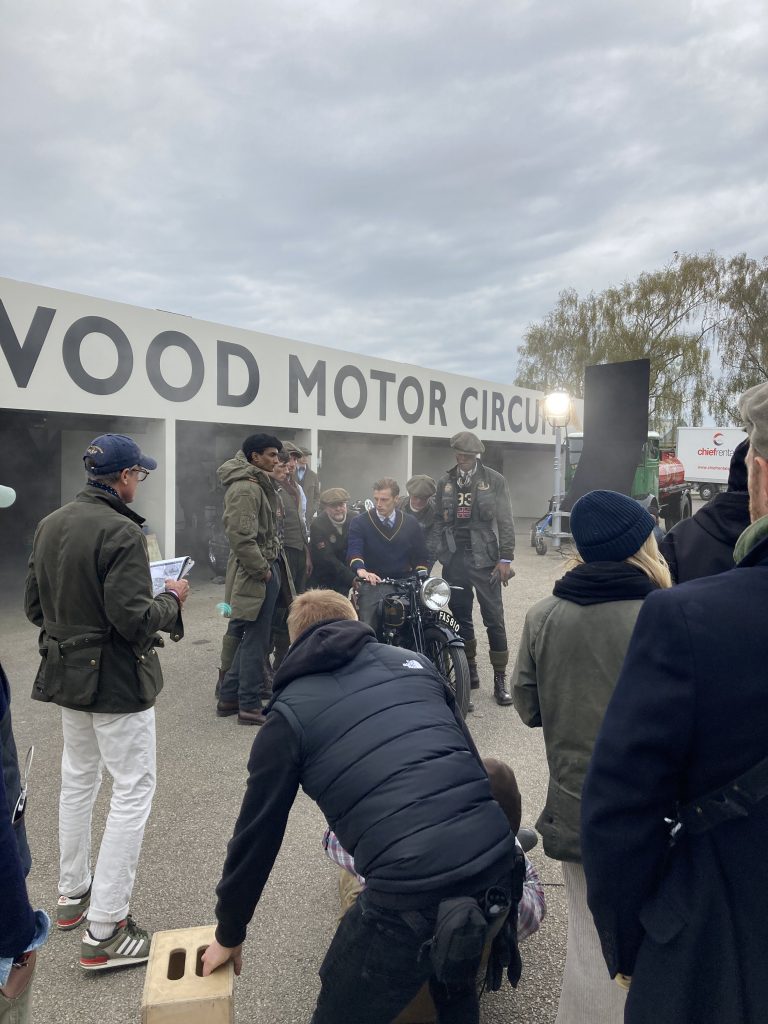
5. What metrics do you prioritise when measuring the success of a video marketing campaign? How do you ensure that your campaigns not only engage viewers but also drive desired outcomes for the brand?
To measure success, we always have to define it.
That happens before we even set a creative idea in place. Strategy comes first, with rare exceptions. Depending on what the desired outcome is, we build a plan of what we should create to get there.
That’s based on past work the brand has done, their target audience’s reactions, their current position, their competitors, and their overall market situation.
We’ve to remember that marketing is not the CFO’s favorite department.
So as an agency that has the desire to grow, we’ve to provide our allies (CMOs, Marketing Directors, Marketing Managers, etc) with good business results so they can ‘fight’ for an increased budget the following year.
Let’s start first by saying the biggest myth of 2023 on social media was ‘vanity metrics’.
Despite understanding the point behind the message, I need to state that it’s not true. All metrics count.
Even likes and views. As long as they’re measured right.
Now into specific metrics:
For increasing a brand’s awareness depending on the channel I’d count:
Simple Metrics:
View Count, Engagement Rate, Social Shares, Brand Mentions, Feedback and Comments More complex metrics:
Audience Retention, Video Completion Rate, Watch Time, Heatmaps if it was through a video hosting platform and not social media.
For increasing sales:
Click-Through Rate (CTR), Conversion Rate, Cost Per Conversion, Average Order Value (AOV),
Customer Lifetime Value (CLTV) Increase, Sales Growth, Lead Generation Metrics, Shopping Cart
Abandonment Rate, Return on Advertising Spend (ROAS)
In terms of a more complex understanding of your content’s effectiveness, especially for major campaigns, run tests before you publish it.
The most simple form of that is using a complex video host platform like Wistia and testing how a small test group that represents your target audience watches a video.
The most complex version of it is a whole arm of marketing called Neuromarketing. An extremely interesting topic that allows you to understand how people feel about a campaign and an idea.
It’s funny realizing how many times we can’t or choose not to share what we thought of a campaign, even if we’re paid to do it.
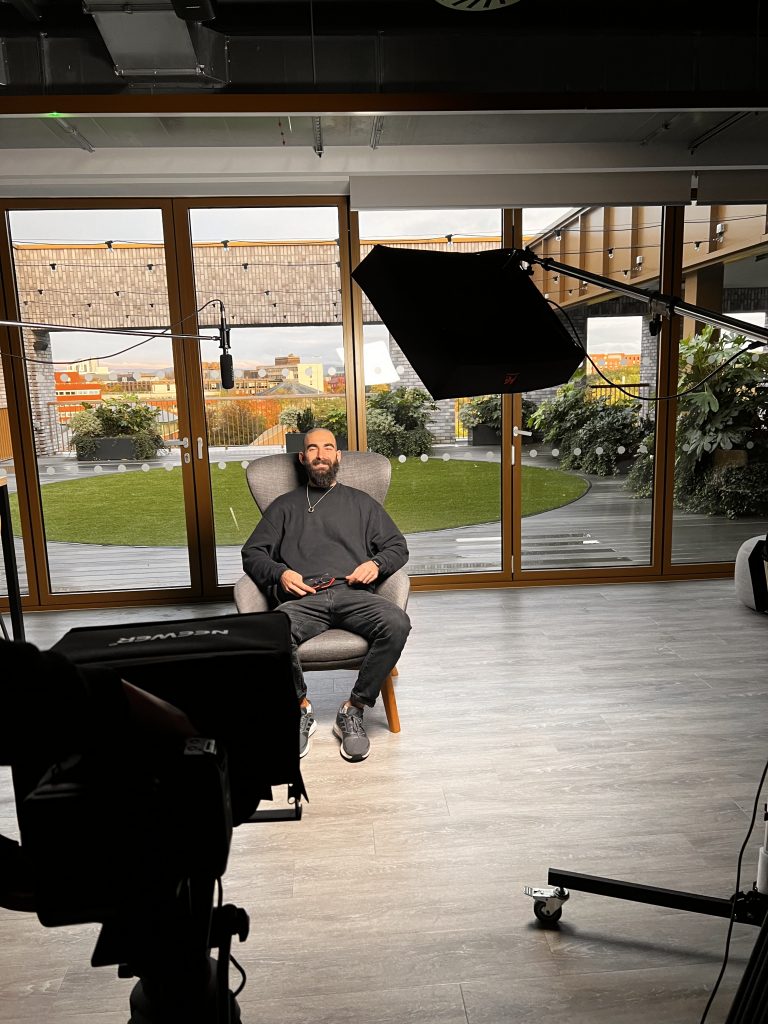
6. What challenge(s) have you faced in your career and how did you overcome it? What advice would you give to someone who may be going through the same challenge?
The first challenge is maintaining a healthy work-life balance. All kinds of projects in video production require long hours, last-minute problem-solving, and high levels of stress. On top of that, you add potential struggles of freelance life, like unstable work, late invoices, paying taxes, etc. It is a lot.
Sleep properly, exercise regularly, avoid eating sh*t day in and out. No matter how little time you think you’ve, it’s all about priorities. I still struggle with that quite a lot, and it’s okay. Everything is a work in progress.
The second challenge is protecting your passion. You jumped into this industry out of love for the craft and dreams of making a living through your creativity. Make sure nobody gets that away from you.
Say no to projects, stop working with toxic people, and take a break if you feel lost.
I thought making narrative films was my dream, but moved away from it as soon as it felt more like holding me back.
7. Where can our audience follow and engage with yourself and Storyflow on social media?
LinkedIn is the main platform I use, as I post daily talking about video marketing, building a video agency, and all the latest work I’ve produced.
If you’re interested in learning more about video, send me a connection request and message me any questions.
You can also email me at john@storyflowe.com
Storyflow is active only on Instagram where we post our final work.
Thank you for reading our latest Creator Behind The Campaign. If you enjoyed it, please share it forward. Make sure you’re following Because of Marketing on LinkedIn, Instagram and TikTok for all the greatest marketing campaigns.
